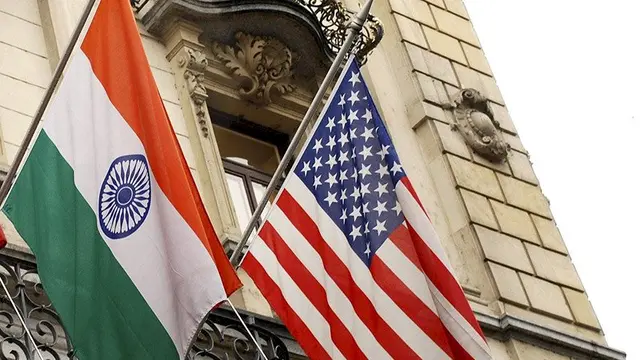*Author: Prof. Engr. Zamir Ahmed Awan, Founding Chair GSRRA, Sinologist (ex-Diplomat), Editor, Analyst, and Non-Resident Fellow of CCG (Center for China and Globalization). (E-mail: [email protected]). *
In the realm of global geopolitics, the delicate balance of power and influence often gives rise to complex alliances and rivalries that shape the course of international relations. The ongoing confrontation between India and China, coupled with the involvement of the United States, has garnered vital attention as it has the potential to reshape the dynamics of the Asian continent and beyond.
Historical Rivalry: India and China
The age-old rivalry between India and China finds its roots in historical, territorial, and ideological differences. Border disputes, most notably in the Himalayan region of Aksai Chin and Arunachal Pradesh, have kept tensions simmering between the two Asian giants. Cultural and political disparities have further contributed to their divergent paths on the international stage.
Territorial Disputes and Border Skirmishes
The territorial disputes between India and China have been a longstanding point of contention. Incidents such as the 1962 Sino-Indian War, Doklam Stand-off in 2017, and more recent border skirmishes, such as the Galwan Valley clash in 2020, have underscored the fragility of their relationship. These disputes have often escalated due to differing perceptions of the Line of Actual Control (LAC), adding to the complexity of diplomatic negotiations.
Divergent Ideologies
India and China represent contrasting ideological models. India a Western Style so-called democracy, with a pluralistic society, has embraced a caste-based political system and a market-oriented capitalist economy, widening the gap between poor and rich. In contrast, China is following a progressive and people-friendly socialist system. Where the people of China enjoy prosperity and a lavish lifestyle. These ideological differences influence their foreign policies and interactions with other countries.
US Involvement and Strategic Implications
The United States, keen on preserving its global dominance and countering the rise of China, has found a strategic partner in India. Leveraging historical tensions between India and China, the US has been deepening its cooperation with India to create a counterbalance against China.
Strengthening Indo-US Relations
Over the past few years, India and the US have strengthened their diplomatic and defense ties. The Quadrilateral Security Dialogue (Quad), which includes the US, Japan, Australia, and India, has emerged as an important platform to coordinate efforts aimed at maintaining a free and open Indo-Pacific. Joint military exercises and technology-sharing agreements have further deepened this partnership.
Economic Dimensions: US-India Trade and Investment
Economically, the US has been supportive of India's efforts to diversify its trade partnerships. The US has been assisting India financially, offering trade concessions, a relaxed visa regime, transfer of technology and liberal investment policies, etc. Bilateral trade agreements and investment deals have favored India. These economic linkages have reinforced the strategic alignment between the US and India. India has become a major defense partner and strategic ally. The transfer of defense technologies, advanced weaponry systems, and hi-tech has been instrumental in the modernization of Indian defense.
The India-China confrontation, underscored by historical disputes and ideological differences, remains a complex challenge in the realm of international relations. The United States calculated involvement in supporting India serves its own strategic interests in containing China's influence. As the geopolitical landscape continues to evolve, the delicate interplay between these three nations will undoubtedly have far-reaching consequences that extend well beyond the borders of the Asian continent. The world watches with keen interest as this intricate dance of power unfolds.
However, India despite of unlimited support of the US and its alliance, could not gain any significant advancement. India's society is unique in nature and only a nation based on the caste system. There are four casts in India and none of them is equal to others in any respect, their rights, and status in society, all are based on the specific caste. Laws. The judiciary, jobs, and social status is dependent on one’s caste. Not merit-based. One is known by his/her caste only. Irrespective of his or her talent, education, capabilities, or contribution. Such an unjust system is rather the biggest hurdle in the modernization and development of India.
India is home to many minorities and a variety of religions. Muslims who ruled India for almost 800 years, have become the second largest minority, but, find it difficult to survive under the racist and extremist regime of Prime Minister Narendra Modi. Christianity, a strong minority backed by the Western world, is facing severe challenges of survival and facing violence often. Sikhs, one of the most peaceful minorities in India find it difficult to survive under extremist and fanatic regimes. Domestic violence and the extremist policies of Prime Minister Modi have paved the way for insurgencies and separatists movement. Deteriorated law and order situation and secure lapses are other hindrances to its development.
Despite America and its allies' support, India fails to achieve any remarkable developments and is still unable to compete with China. It can be a dream for Americans to use India against China, but, it will be a dream never realized. India has no capability, nor possibility of fulfilling American desires.
(ASIA PACIFIC DAILY)
 简体中文
简体中文

